INTRIGUED BY THE POSSIBILITIES OF SROI?
There are several resources available to help get started. The Alliance of Arizona Nonprofits is committed to strengthening the local nonprofit community by helping organizations demonstrate their full impact. Alliance CEO Kristen Merrifield indicated they are developing the “technical training and assistance to help more organizations understand how and what to measure, and to also explore what resources are already in existence that could lend themselves to this work.” arizonanonprofits.org
For nonprofits, communicating impact and value is crucial. While most businesses answer to a select group of owners, investors and shareholders, nonprofits must justify their existence and performance to a wide range of stakeholders. Donors, program partners, volunteers, board members, legislators, clients and local leaders all want constant assurances that their time, money and influence are being well spent. Organizations that fail to do this effectively may soon find themselves falling behind.
Effectively assessing and communicating why the organization and its programs matter, though, can be tricky. The age of increasing donor sophistication requires that nonprofits do more than simply share heartwarming stories about their clients. Even traditional quantitative tools such as cost-benefit analyses fall short in their ability to look beyond immediate direct and indirect impact.
A new approach, however, has recently started to gain traction. A Social Return on Investment (SROI) analysis offers nonprofits the potential to look beyond the standard impact metrics to the value of the outcomes of its services. Put more simply, while most impact reports or “stories of change” generally refer to inputs (resources devoted to a program) and outputs (things the program produces), SROI can measure the outcomes (things that are different because that program exists).
Recently, a partnership of local stakeholders, led by the Alliance of Arizona Nonprofits, with research conducted by the L. William Seidman Research Institute and support from the Arizona Community Foundation, J.R. Hollon & Associates, InMedia Company, The Phoenix Philanthropy Group and Salt River Project, ambitiously attempted to determine the SROI for Arizona’s nonprofit sector as whole. Laurel Kimball, Ph.D., the study’s project manager, says the aim is really to determine, “What difference do nonprofits make? If 20 teenagers, for example, go to college rather than to prison as a result of a nonprofit’s program, what is the economic value to our state?”
The study surveyed more than 4,000 nonprofits about their programs and services to determine the SROI for each organization and then aggregate this data for Arizona as a whole. While the study was partially stymied by insufficient survey responses and available data, those organizations that were able to provide complete responses offered a glimpse into the powerful potential of SROI.
One of the most compelling examples is that of Boys & Girls Club of Central Phoenix. While it’s simple to measure its inputs ($11.1 million, 236 staff and 823 volunteers, 13 venues) and outputs ($14.1 million in direct impact to 11,000 young people from 4,155 households), if we go one step further and measure outcomes in just the one area of increased parental productivity, the impact figure jumps to $126 million.
A shocking difference, yes? And this isn’t some fancy accounting trick. It’s simply looking at impact from a more comprehensive point of view. Imagine being able to take that kind of data into a solicitation with a prospective donor. Or using it to reengage current supporters at a higher level. It could have a transformative effect.
So, is SROI worth the time? Though the process can be a bit complicated, we definitely believe the benefits are worth the trouble. According to Beyond the Bottom Line: The Economic and Social Value of Arizona Nonprofits (available at aznonprofitvalue.org), here’s why:
To keep the organization’s focus on the issues it seeks to address. Calculating SROI is similar to strategic planning. It’s about looking expansively at the organization’s programs and who they affect, beyond the nuts and bolts to the ripples that extend far beyond the immediate line of sight. Looking downstream helps those involved to visualize the big picture and consider how every action their organization takes touches each stakeholder along the way.
To evaluate with data the effectiveness of a particular program or service. To develop a proper SROI analysis, the organization needs to evaluate each of its programs and services individually — establishing a list of the affected stakeholders and translating those effects into a monetary value. This provides a crystal-clear insight into each program’s impact and effectiveness. It can demonstrate which programs help achieve the overall mission and which do not.
To create a common language for discussions with business leaders and funders. Anyone who’s ever met with a potential corporate funder has probably noticed their priorities and concerns were a bit different from the standard donor. They were likely less interested with anecdotal evidence and more concerned with hard numbers. Because SROI was designed to be an evolved version of the standard corporate cost-benefit analysis, all partners and funders will appreciate the process and its results.
To demonstrate to donors that there is a social return on their investment. In the past, institutional or geographic loyalty made it simpler to attract and retain local funders; however, donors today want to find the programs that offer the best impact in the areas they are passionate about — no matter where they are located. This means more competition for funding and, consequently, more sophisticated stories of change. SROI can help the organization stand out from the crowd.
Social Return on Investment? For example, Boys & Girls Club of Central Phoenix reports 2017 input of $11.1 million enabled output of $14.1 — and an outcome of $126 million in just one area of impact (increased parental productivity). Beyond the Bottom Line: The Economic and Social Value of Arizona Nonprofits (available at aznonprofitvalue.org)
Richard Tollefson is founder and president, and Michal Tyra is director of Client and Community Engagement at The Phoenix Philanthropy Group, an Arizona-based international consulting firm serving nonprofit organizations as well as institutional and individual philanthropists. phoenixphilanthropy.com.
